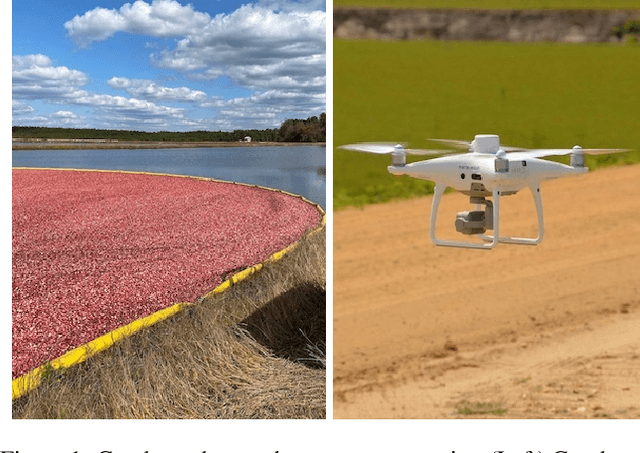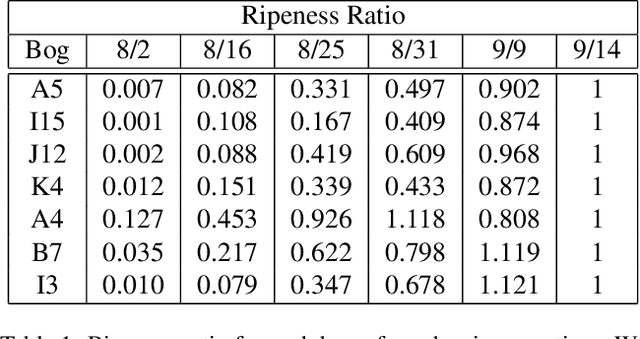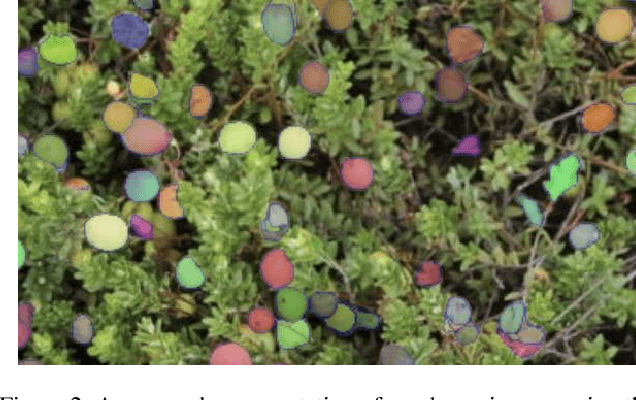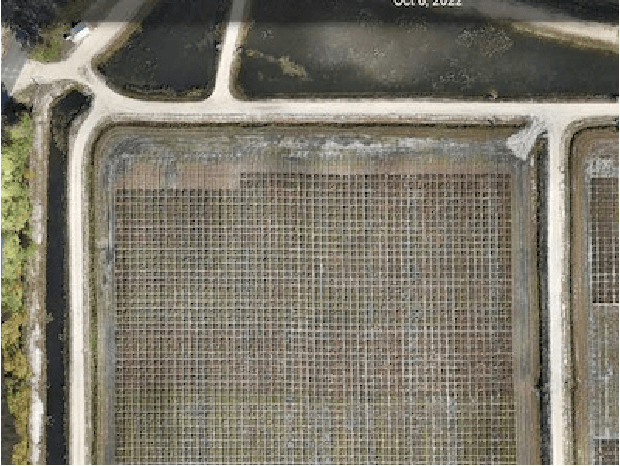Jack Lowry
Agtech Framework for Cranberry-Ripening Analysis Using Vision Foundation Models
Dec 12, 2024



Abstract:Agricultural domains are being transformed by recent advances in AI and computer vision that support quantitative visual evaluation. Using aerial and ground imaging over a time series, we develop a framework for characterizing the ripening process of cranberry crops, a crucial component for precision agriculture tasks such as comparing crop breeds (high-throughput phenotyping) and detecting disease. Using drone imaging, we capture images from 20 waypoints across multiple bogs, and using ground-based imaging (hand-held camera), we image same bog patch using fixed fiducial markers. Both imaging methods are repeated to gather a multi-week time series spanning the entire growing season. Aerial imaging provides multiple samples to compute a distribution of albedo values. Ground imaging enables tracking of individual berries for a detailed view of berry appearance changes. Using vision transformers (ViT) for feature detection after segmentation, we extract a high dimensional feature descriptor of berry appearance. Interpretability of appearance is critical for plant biologists and cranberry growers to support crop breeding decisions (e.g.\ comparison of berry varieties from breeding programs). For interpretability, we create a 2D manifold of cranberry appearance by using a UMAP dimensionality reduction on ViT features. This projection enables quantification of ripening paths and a useful metric of ripening rate. We demonstrate the comparison of four cranberry varieties based on our ripening assessments. This work is the first of its kind and has future impact for cranberries and for other crops including wine grapes, olives, blueberries, and maize. Aerial and ground datasets are made publicly available.
Vision-Based Cranberry Crop Ripening Assessment
Aug 31, 2023



Abstract:Agricultural domains are being transformed by recent advances in AI and computer vision that support quantitative visual evaluation. Using drone imaging, we develop a framework for characterizing the ripening process of cranberry crops. Our method consists of drone-based time-series collection over a cranberry growing season, photometric calibration for albedo recovery from pixels, and berry segmentation with semi-supervised deep learning networks using point-click annotations. By extracting time-series berry albedo measurements, we evaluate four different varieties of cranberries and provide a quantification of their ripening rates. Such quantification has practical implications for 1) assessing real-time overheating risks for cranberry bogs; 2) large scale comparisons of progeny in crop breeding; 3) detecting disease by looking for ripening pattern outliers. This work is the first of its kind in quantitative evaluation of ripening using computer vision methods and has impact beyond cranberry crops including wine grapes, olives, blueberries, and maize.
 Add to Chrome
Add to Chrome Add to Firefox
Add to Firefox Add to Edge
Add to Edge